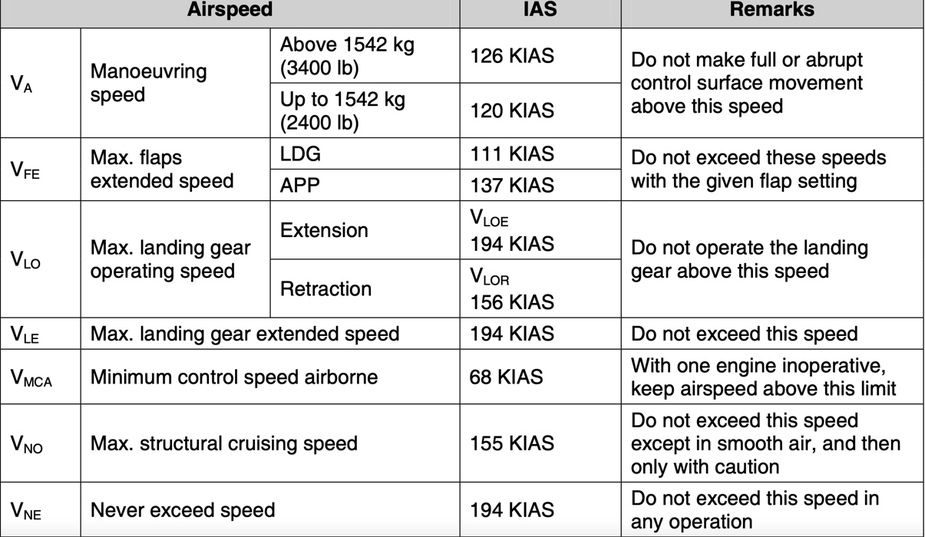AdamFrisch wrote:
Doesn’t look like a Vmc demonstration (as you would never let it turn that much in such a situation) and doesn’t look like regular engine out exercises either.
I agree, they were nowhere near VMC (68Kts is VMC on a DA42) – they do seem to have exceeded Max Manoeuvring speed given track and speed graph Snoopy posted. Looks like a potential structural disintegration could be the cause.

You can exceed Va speed all the way up to Vne in the right circumstances, so I wouldn’t take that they were above Va as any indication that they induced structural failures. Something else happened, I think. The tracks suggest pretty normal or benign maneuvers, so must have either had an engine failure/shut one down at the wrong time and/or corrected wrong, or they simply entered a spin for some other reason. Twins are not tested for spin recovery in most cases and can behave unpredictably.
Not all DA42s have the variable elevator backstop, and this school operates a very new fleet of the -VI variant.
What I find a bit weird here are the speed excursions. Looking at the whole track on FR24, they seem to have done (steep) turns, but the accident happened after a stretch of straight flying. IME you don’t lose speed during steep turn training in a twin. If this was done intentionally, then perhaps they pushed their luck a little too far.
I would vote for structural integrity. An intruction flight with such airwork is kind of the same I have done, but the last 360 before end of the flight was stated with a ground speed of 155+ with the FR24 trace, which I suppose is ADSB, so quite relevant. The Va is around 120kn, they were much over, and the last is not the only one.
From a generic way, I don’t understand how a twin engine with an instructor would fall from the sky without a wing or part of the fuselage in pieces.
I have been told that VEBS was here to avoid deep stall, it pushes the nose down when flaps are full and gas + than 20%. It’s an element of the pre-flight and we have to verify that it activates when flaps are full and power more than 20%. I believe this DA42 is a VI, and have no idea if it’s equipped with VEBS, but the DA42 of my ATO has it (it’s 2 yo).
from the DA42 NG AFM:
Variable Elevator Stop:
The DA 42 NG is equipped with an electrically operated actuator that limits the elevator-up
travel to 13° as soon as the power setting of both engines exceeds approximately 20 %
(approach power setting). This is 2.5° less than the 15.5° full deflection.
The linear actuator acts as a movable stop and is controlled by two switches, one for each
power lever. When the power of one engine is reduced below approximately 20 % full
elevator deflection is regained.
An amber annunciation (CAUTION) on the G1000 display is provided to inform the pilot
in case a malfunction occurs. The annunciation illuminates when the variable stop should
be in place and is actually not activated (power on condition) or should be retracted and
actually limits the elevator travel (power off condition).
Not all DA42s have the variable elevator backstop
Is that a good thing? or a bad thing?
greg_mp wrote:
From a generic way, I don’t understand how a twin engine with an instructor would fall from the sky without a wing or part of the fuselage in pieces.
It did in Sweden the other year. Flat spin.
I would vote for structural integrity.
Again we have highly unlikely theories like in recent C210P crash. Why not assume something more obvious? It’s much more likely the cause was what @Airborne_Again wrote – flat spin.
What’s the typical V/S during a flat spin?
1000 feet per spin?
Emir wrote:
Why not assume something more obvious?
Fully agree – when you hear hoofbeats, think horse not zebra.
Everything known so far looks like an unfortunate and rare but unfortunately sometimes happening accident while practicing steep turns. Might be that the inner engine quit might be they just got to steep and went into spin. In a twin this can be pretty deadly very quickly.
It will be discussed why they had a Pax on board while practicing steep turns.